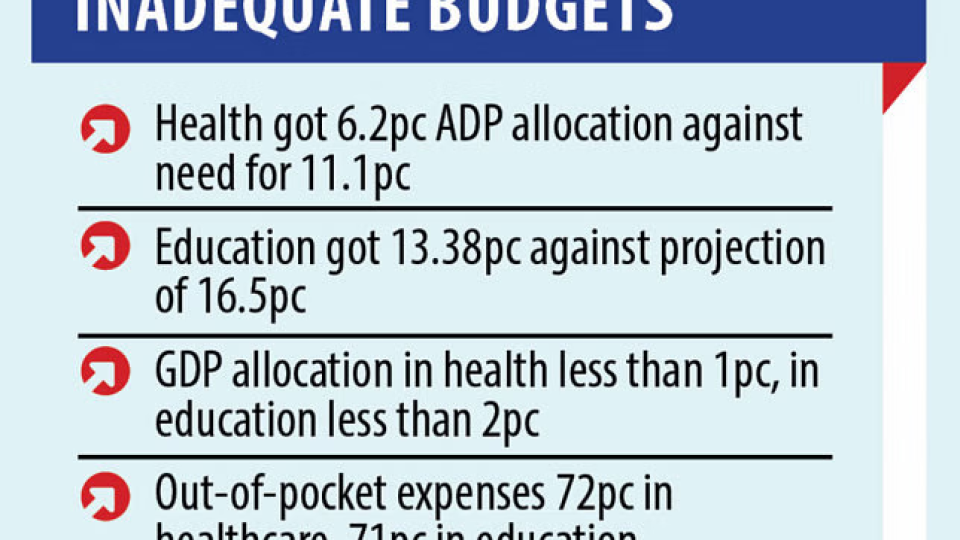January 26, 2024
DHAKA – The government has made lesser allocations for the education and health sectors than what is projected in the 8th five-year plan, raising questions about its commitment to these critical areas.
The 8th five-year plan is being implemented from fiscal 2020-21 to fiscal 2024-25.
Several sectors including health, education, agriculture and social protection got less allocation in the last four fiscal years than what is projected in the five-year plan, according to a document placed in the planning commission meeting on Wednesday.
For instance, the health sector got 6.16 percent ADP allocation this fiscal year against the projection of 11.1 percent, while education got 13.38 percent against the projection of 16.5 percent.
Less budgetary allocation for health and education can lead to substandard healthcare and human resource development and also increases out-of-pocket expenditure, said a midterm review report of the 8th five-year plan that was also placed at the meeting.
Education and healthcare are two of the most vital factors for a well-educated and healthy population, said Manzoor Ahmed, the founder of BRAC University Institute of Educational Development
“The gap between projection in five-year plan and actual allocation shows that there is an inconsistency between planning and implementation — such a gap upsets the total planning.”
The authorities are by and large failing to understand what are the priorities for the country, said Ahmed, now an emeritus professor of Brac University.
The low budget for the health sector is a “historical concern” in Bangladesh, the midterm review report said.
It has failed to allocate an adequate budget of around 3 percent of GDP for the health sector, with the allocation remaining less than 1 percent of GDP.
It went up slightly to 0.89 percent of GDP in 2021 but again dropped to 0.8 percent the following year.
Low budget allocation has serious implications on the health budget of an individual in Bangladesh, as reflected in high and increasing out-of-pocket expenses on healthcare, the review said.
Out-of-pocket expenditure of 72 percent on healthcare is very high and is more than in India, Bhutan, Maldives, Nepal, Pakistan and Sri Lanka.
“This is also an indicator of high inequality in healthcare services and a cause of poverty and vulnerability,” the review said.
Meanwhile, families bear 71 percent of the total education expenditure in Bangladesh, as per Unesco’s Global Education Monitoring Report 2022.
The issue of financing education remains the core of the problem in the education sector.
While the government has increased its budget for education in recent years, there is still a need for greater investment in the sector.
In 2023, government expenditure on education was only 1.64 percent of GDP whereas most upper middle-income countries spend around 5-6 percent of their GDP on education, the review said.
If public funding cannot be managed, the government must explore innovative financing mechanisms such as public-private partnerships to mobilise additional resources for the education sector, it said.
“The situation is like that people who can afford will get the education and health care facilities,” Ahmed said.
Planning commission officials maintain the lower allocations for the two sectors are due to the ministries’ inability to spend their budgets. Cost overruns and delays in implementing the projects are also to blame.
Shamsul Alam, who was a pivotal figure in the drafting of the 8th five-year plan, acknowledged that many ministries like health cannot spend all their allocations.
Asked about why ADP allocation was less than the projection, Alam, who is the immediate past state minister for planning, said the government makes allocations keeping its priorities in mind.
“We needed to change our priorities following the pandemic and the Ukraine war.”
Due to the pandemic, resources had to be diverted to the stimulus packages.
“That was unforeseen and as a result, the allocations for education and others needed to be changed.”


